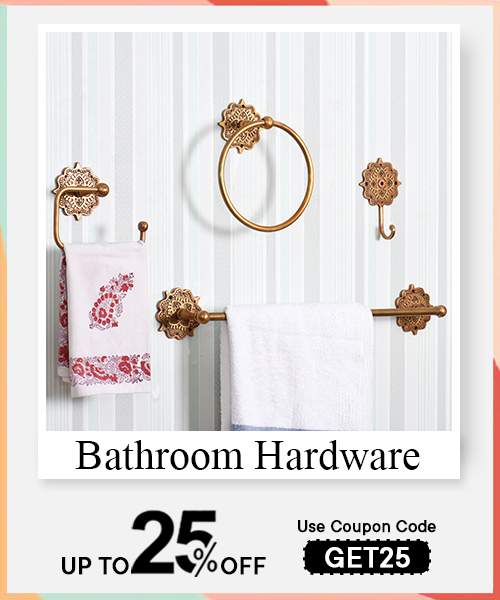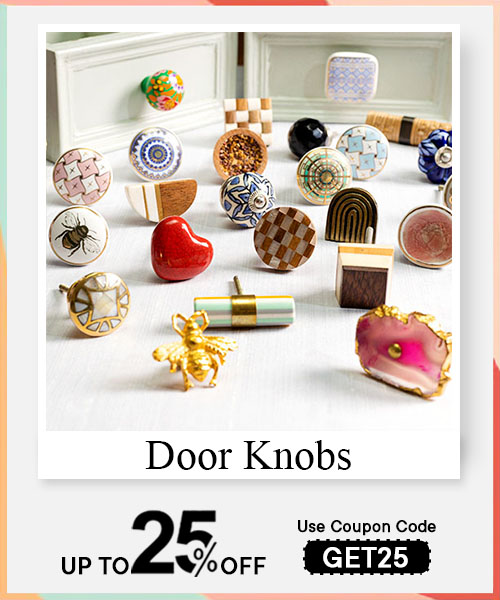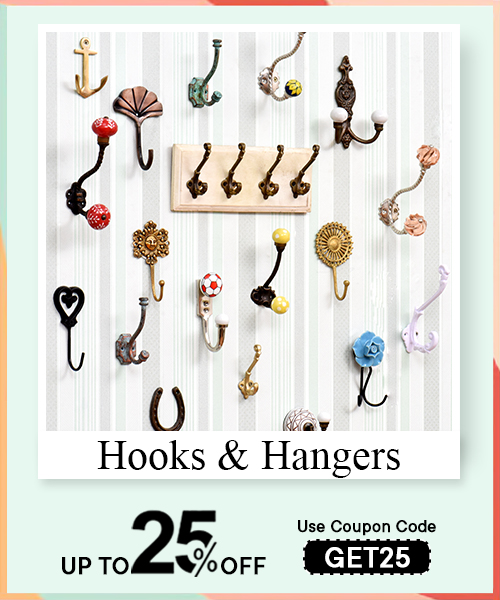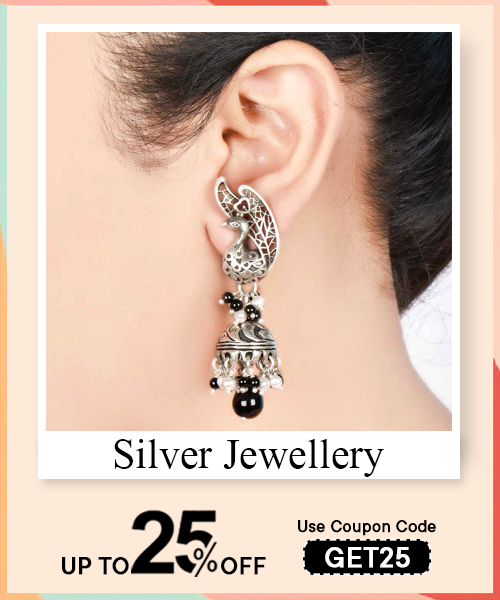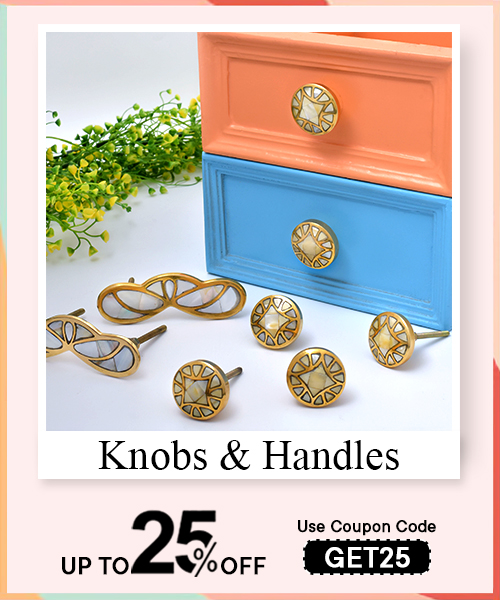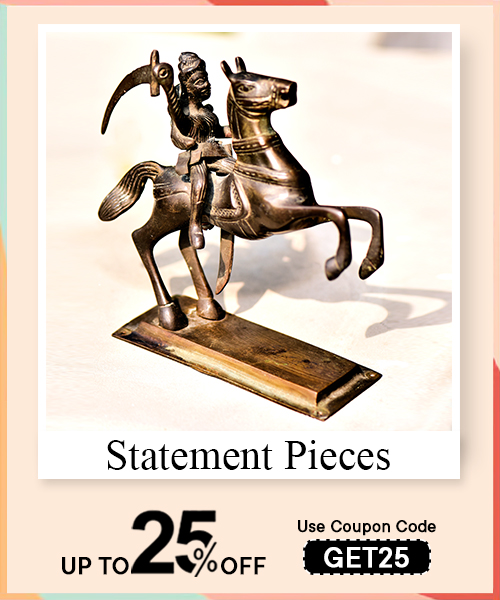In today’s fashion ecosystem, jewelry is no longer a quiet addition, it is a narrative. Chunky chains, asymmetrical earrings, layered necklaces, and sculptural rings are dictating the tone. Pieces now echo identity and rebellion, often oversized, distorted, or playfully mismatched. Gender-neutral jewelry with minimalist contours is also emerging, subtly powerful in its restraint. Designers are blending traditional craftsmanship with futuristic vision, fusing raw stones, recycled metals, and sleek finishes. Jewelry is not just worn anymore; it is curated like art, worn across collarbones, cuffs, and even over clothes. Personalization through initials, zodiac signs, or birthstones remains a crowd favorite, carving intimacy into adornment.
The revival of bold jewelry is a rebellion against restraint. In a post-minimalist world, statement pieces restore grandeur to everyday dressing. They are expressive, sculptural forms that carry cultural, emotional, or even political weight. Think of them as wearable punctuation, arresting, intentional, unapologetic. In a fast-scrolling digital age, these pieces stop the gaze, spark conversation, and often symbolize individuality. Whether it is an oversized choker, an ear cuff climbing like ivy, or finger rings layered with instinct, each piece amplifies voice without words. Statement jewelry defies trends. It reclaims presence. Its resurgence is not about opulence. It is about reclaiming space in subtle revolutions.
This year, materials reflect both ethos and innovation. Recycled metals, especially upcycled brass and sterling silver, are fashion’s ethical reply to climate urgency. Resin, enamel, and ceramic are reshaping traditional aesthetics with bold pigments and smooth finishes, creating playful silhouettes. Pearls continue their modern redefinition, baroque, asymmetrical, and often paired with chains or leather. Lucite and acrylic reintroduce a 90s nostalgia, while sustainable wood and raw crystals bring earth-bound textures to the forefront. Gold vermeil still reigns, offering the warmth of gold with accessibility. The real trend is tactile duality. Hard meets soft, polished contrasts with matte, and organic materials dance with the synthetic.
Read More : Jewelry Storage Ideas You Will Want to Use
Vintage jewelry is carving a new, emotional space in contemporary collections. Think heirloom inspired lockets, art deco filigree rings, and Victorian style brooches resurfacing with modern polish. These pieces carry emotional gravitas, storytelling power, and rich textures of craftsmanship that fast fashion lacks. The faded gold, oxidized silver, and gemstone patinas are not flaws; they're deliberate aesthetic features, echoing the romance of another era. Today’s designers are not simply mimicking the past but reimagining it with cleaner silhouettes, minimalist enhancements, and layered styling, creating jewelry that bridges memory and modernity, deeply rooted in both fashion and feeling.
Absolutely and not just in a trend driven way. Vintage jewelry has evolved from a niche interest to a mainstream obsession, largely because it embodies authenticity in an increasingly digital world. It tells stories, real or imagined, that resonate with emotional seekers and stylistic purists alike. From flapper era sautoirs to 1980s chunky chains, vintage pieces offer tactile nostalgia that fast paced trends can't replicate. Today’s fashionistas pair Edwardian pendants with linen shirts or stack vintage inspired bangles over ribbed knit sleeves, fusing old world charm with contemporary flair. Celebrities, stylists, and runway designers continually breathe new life into these pieces, positioning them not as outdated but timeless. The appeal lies in their uniqueness: no two vintage pieces age the same way. As sustainability becomes vital, many opt for vintage to avoid mass production and embrace conscious collecting. Vintage jewelry doesn’t chase trends; it becomes an anchor around which modern fashion orbits.
Retro influences dominate jewelry lines today, reappearing with curated precision. Designers are drawing heavily from the bold geometrics of the 1920s Art Deco era, think baguette diamonds, sunburst motifs, and stepped arrangements. The 1970s bohemian aesthetics, amber stones, turquoise inlays, and brass textures, also enjoy widespread revival, often layered with contemporary charm bracelets or sculptural cuffs. Chunky gold chains, once hallmarks of 1980s maximalism, are now staples in minimal streetwear. There’s also a resurgence of Y2K nostalgia, heart shaped pendants, enamel charms, and mood rings updated with luxe finishes. But the key difference? Today’s reinterpretations prioritize versatility and gender fluidity. Earrings from the 60s are resized for modern wearability, while brooches double as scarf pins or necklace charms. The vintage influence is no longer literal, it’s experiential, blending retro aesthetics with intuitive, present day craftsmanship. These designs connect the past to the pulse of now, creating jewelry that feels both classic and distinctly current.
Nostalgic jewelry has become a wearable form of emotional storytelling in an age longing for depth. In uncertain times, people turn to familiarity, and jewelry steeped in memory, whether real, inherited, or imagined, offers comfort and identity. Pieces like lockets, birthstone rings, or antique coin pendants evoke a sense of legacy, grounding wearers in lineage and lore. Social media has amplified this trend, allowing users to showcase their personal histories, whether it’s a grandmother’s ring or a thrifted Victorian pin. The rise of quiet luxury has also played a role, consumers seek meaning over mass production. Unlike trend based jewelry, nostalgic pieces feel intentional, intimate, and enduring. Many younger buyers, especially Gen Z and millennials, view them as wearable heirlooms in the making, or as a rebellion against disposable fashion. Ultimately, nostalgic jewelry isn’t about the past, it’s about personal resonance, a bridge between one’s story and the styles we choose to wear every day.
Minimalist jewelry has become the quiet anthem of contemporary fashion, a style language that speaks through silence. Defined by clean lines, geometric precision, and restrained elegance, it allows metal and form to breathe. In contrast to ornate pieces, minimalist styles focus on essential shapes, delicate chains, bar studs, open rings, refined to their core. Rooted in functionality and visual lightness, this aesthetic prioritizes intentionality over excess. The result is wearable art, pieces that don't demand attention but invite admiration. Whether in brushed gold, fine silver, or rose tones, minimalist jewelry blends seamlessly into daily life, adapting to any mood, outfit, or setting.
Minimalist jewelry in today’s fashion landscape is defined by a deliberate absence of excess, embracing clean geometry, negative space, and refined simplicity. It’s not just about being dainty, it’s about a thoughtful design philosophy that elevates less into luxury. Shapes like tiny discs, open circles, bars, and thin chains take center stage. Finishes often lean toward matte or satin polish, favoring soft reflection over shine. These pieces prioritize versatility, stackable rings, solo pendant necklaces, and asymmetric earrings, meant to layer or stand alone. The trend reflects a deeper cultural shift, an embrace of mindfulness, sustainability, and pared-down living, expressed through everyday adornment.
Minimalism is transforming daily accessory choices by replacing statement pieces with wearable ones that echo one’s identity in subtle, sustainable ways. Consumers now gravitate toward jewelry that complements rather than commands, thin bangles over chunky cuffs, small hoops instead of chandelier earrings. This shift stems from a desire for timelessness over trend, utility over flamboyance. Minimalist pieces seamlessly transition from office to evening, allowing individuals to build capsule jewelry collections. In an era of conscious consumption, minimal designs also tend to be crafted with higher-quality materials and ethical practices, making every choice not just stylish but considered and intentional.
Yes, dainty necklaces and stud earrings are not only still in style, they’ve become foundational elements of modern wardrobes. Their lasting appeal lies in their versatility and ability to elevate without overpowering. A fine chain with a single charm, a floating diamond pendant, or a bar necklace rests effortlessly on the collarbone, aligning with minimalist values. Studs, whether in pearl, diamond, or abstract shapes, continue to dominate because they bridge casual and formal with ease. These staples are now often seen layered or mixed for texture, offering an evolved take on personal style. Minimalism hasn't replaced trend, it has refined it.

Fashion is cyclical, and jewelry trends are no exception. As minimalism and storytelling aesthetics dominate current taste, gaudy, oversized accessories are quietly stepping down. Over embellished bib necklaces, neon acrylic bangles, and chunky plastic rings once hailed for bold statements now feel dated. The rise of soft gold, sculptural pieces, and artisanal designs has pushed mass produced glam to the fringe. Microtrends like 2010s chokers or oversized hoops once red carpet staples are now overshadowed by sleeker, quieter alternatives. The decline signals a shift from showy to subtle, from trend chasing to curated personal expression, emphasizing material integrity, historical references, and emotional connection.
Several once popular jewelry trends have faded from the forefront, primarily due to oversaturation and changing aesthetic priorities. Chokers, once iconic during the 2010s fashion revival, now appear overly stylized and lack the timelessness today’s consumers seek. Likewise, heavy statement necklaces and large bubble style baubles have lost their charm, deemed too dramatic and less wearable for daily life. Feather earrings, candy colored plastic pieces, and excessively layered chain link bracelets have also taken a backseat, replaced by subtle, emotionally resonant pieces. Social media fatigue from fast changing trends has pushed audiences toward meaningful, well crafted designs. Jewelry today leans into storytelling, cultural symbolism, and eco consciousness, rendering overly flashy items obsolete. As tastes mature, consumers value refinement, proportion, and the tactile quality of metals over theatrical gimmicks. These outdated trends now feel more costume than couture, disconnected from the current desire for longevity and authenticity in design. Their departure isn’t a loss, but a course correction toward enduring style.
A jewelry style becomes outdated when it loses cultural relevance, feels overused, or fails to evolve with shifting aesthetics. The rapid consumption of microtrends fueled by social media creates a burnout effect where once celebrated styles start to feel repetitive or lacking depth. For instance, styles tied too closely to a specific era or pop moment, such as emoji earrings or chevron bracelets, often fade when their visual language no longer resonates with contemporary sensibilities. Material choice also plays a role; plastics or overtly synthetic finishes may appear juvenile or out of place amidst a wave of natural textures and slow made craftsmanship. Moreover, functionality and wearability now matter pieces that overwhelm or compete with outfits tend to be sidelined. Emotional disconnect is key if a piece doesn’t evoke a story, mood, or identity, it risks becoming disposable. Outdated jewelry isn’t just about design it’s about cultural disconnect and the absence of intentionality.
Chokers and large hoops aren’t entirely obsolete, but their relevance has shifted. The thick velvet chokers that once dominated fashion feeds now read as overly stylized and tied to a nostalgic Tumblr era aesthetic. In their place, designers are reinterpreting chokers using finer materials delicate chains, minimalist pearls, and collarbone grazing metals that feel mature and understated. Similarly, oversized hoops haven’t disappeared but are undergoing refinement. Instead of flashy gold circles, we’re seeing sculpted, oval shaped, or mixed metal interpretations with architectural detailing. The emphasis is on form, silhouette, and proportion rather than volume. Their longevity lies in reinvention; when chokers or hoops embrace subtlety, craftsmanship, and storytelling, they remain relevant. However, when worn without context or updated styling, they can appear dated. Ultimately, relevance is no longer trend based but context driven it’s not what you wear, but how you wear it. Contemporary styling demands quiet boldness, where legacy meets reinvention with purpose.
Sustainable jewelry is no longer a quiet whisper in the design corridors, it’s now a movement echoing through ateliers, artisan markets, and curated digital storefronts. The concept merges conscience with craft, beauty with ethics. In an age burdened with excess, this jewelry speaks of restraint, mindfulness, and connection to the Earth. It celebrates materials reclaimed from the forgotten, lab grown to mimic the brilliance of mined stones, or repurposed from family heirlooms. Beyond adornment, each piece carries a subtle ideology, quiet rebellion against mass production. The shift isn’t just ecological; it’s emotional. It's jewelry that tells a slower, deeper story.
Sustainable jewelry refers to adornments made with minimal environmental impact, using ethically sourced, recycled, or lab created materials. It also encompasses fair labor practices, transparent sourcing chains, and often supports local craftsmanship. The trend reflects a growing global consciousness where the modern consumer seeks meaning beyond sparkle. Amid climate anxiety and social injustice, people now want their choices to mirror their values. Hence, jewelry is no longer just ornamental; it's transformational. The trend stems from the cultural shift toward slow fashion, rooted in longevity and intention. It aligns aesthetic with activism, styling not just an outfit, but a philosophy.
Yes, the contemporary consumer especially millennials and Gen Z is gravitating toward ethically sourced jewelry. They're not just buying beauty; they're investing in stories of origin, of intention, of integrity. The conscious buyer asks Who made this? How were they paid? What materials were used? Jewelry that answers these questions with honesty holds greater emotional and market value. This isn’t merely about guilt free shopping; it’s a romanticization of responsibility. Brands practicing fair trade, zero waste packaging, and traceable gemstone sourcing are earning consumer trust. The emotional resonance of knowing your ring didn’t cost someone else’s suffering? That’s the new luxury.
Sustainability reshapes jewelry design from the inside out. It influences material choices as designers now work with recycled gold, conflict free diamonds, and alternative mediums like wood, seeds, and upcycled metals. Design becomes more intentional, often minimalist, letting the story shine through the structure. Shapes become raw, textures earthy, imperfections embraced as character. Modular and multi purpose pieces gain popularity to reduce overconsumption. Moreover, the design process becomes collaborative with artisans, communities, and even the environment. Sustainability isn’t a constraint; it’s a canvas of possibilities. It invites the designer to innovate, adapt, and return to the soul of creation, respect, balance, and narrative.
Read More : Guide for Building Your Fashion Jewelry Collection
In a world saturated with mass produced accessories, personalized jewelry rises as a quiet yet profound form of self expression. Whether it’s a name etched into a pendant, initials engraved on a ring, or a birthstone embedded in a bracelet, each detail carries emotional weight. These are not just accessories, they're whispers of stories, reflections of roots, beliefs, or bonds. The craftsmanship here isn’t just technical; it’s intimate. Custom jewelry doesn’t follow trends. It preserves moments. It speaks in subtleties: the curve of a font, the choice of metal, the placement of a gem. It mirrors identity, not fashion.
The rise in popularity of personalized jewelry is deeply tied to a cultural shift toward individualism and meaning driven choices. In an age where fast fashion feels increasingly impersonal, people seek pieces that reflect who they are, something unique, heartfelt, and rooted in their personal journey. The resurgence of minimalism also plays a role. Instead of owning many generic pieces, buyers now favor a few customized, intentional ones. Social media has further accelerated this trend, making name necklaces or birthstone rings a visual representation of self online. From sentimental gifts to self love investments, personalized jewelry satisfies emotional and aesthetic desires. It doesn't just accessorize. It articulates.
Customization spans from the subtle to the striking. Among the most popular options are name engravings, initials, and dates, often seen on necklaces, rings, or bangles. Birthstones are also frequently embedded to commemorate milestones like births or anniversaries. Fonts and symbols ranging from delicate scripts to celestial signs allow for deeper symbolic expression. Material choices such as sterling silver, rose gold, or brushed platinum offer stylistic flexibility. Layering charms or combining motifs like hearts, stars, or cultural insignias adds narrative layers. The goal is always the same: to anchor memory, identity, or relationship into form. Every option becomes a personal signature.
Custom jewelry seamlessly merges design with identity, allowing personal style to move beyond fabric and into form. For the minimalist, a slim band engraved with coordinates tells a quiet story. For the maximalist, layered name necklaces in bold fonts make a striking statement. A lover of vintage aesthetics may opt for oxidized finishes or old school lockets, while someone modern might go for clean lines and sans serif typography. Even the type of clasp, the cut of the gemstone, or the polish finish can reflect one’s aesthetic choices. It’s not just decoration. It’s curated character. Personalized jewelry becomes wearable autobiography.
Smart jewelry seamlessly blends aesthetic sophistication with technological prowess. From rings that track heart rate to pendants with emergency alert systems, this innovative genre elevates adornment to utility. These pieces use microchips, sensors, and Bluetooth technology to communicate with smartphones, turning wearables into personal wellness and communication tools. Designers now balance ornamental value with data-driven functionality, embedding tech in ways that don’t disrupt the design language. The result is jewelry that doesn’t scream “device” but whispers “future.” In this fusion of gold, gemstones, and algorithms, style becomes smarter, redefining how we wear and interact with accessories.
Smart jewelry refers to wearable accessories such as rings, bracelets, and necklaces that incorporate digital technology to offer functional benefits such as fitness tracking, security alerts, or even contactless payments. Embedded with sensors, microprocessors, and sometimes haptic feedback systems, these pieces sync with smartphones via Bluetooth or Wi-Fi. For instance, a smart ring might vibrate to signal a call, monitor your sleep cycles, or track hydration levels. Unlike bulkier gadgets, smart jewelry focuses on blending seamlessly into your daily wardrobe, offering form and function in harmony. Crafted for both tech-savvy and fashion-forward individuals, it emphasizes minimalism, discretion, and personalization without sacrificing design aesthetics.
Tech trends are disrupting traditional jewelry design by shifting focus from purely ornamental pieces to multi-functional art forms. Jewelry houses are now collaborating with tech developers, incorporating biometric sensors, NFC chips, and gesture control into rings, bangles, and lockets. This trend gives rise to modular and adaptive designs such as bracelets with interchangeable tech cores or earrings that monitor air quality. Innovations like 3D printing and AI-generated customization empower users to co-create designs tailored to their body data or daily routines. The result is jewelry that doesn’t just sparkle but also speaks, learns, and responds, turning the intimate into the interactive.
Read More : How to Wear and Style Statement Earrings?
Yes, smart rings and bracelets are gradually entering mainstream fashion and lifestyle markets. Once considered niche gadgets, these pieces are now being embraced for their sleek profiles, everyday utility, and discretion. Brands like Oura, Bellabeat, and Ringly are leading this revolution, creating accessories that track fitness, sleep, stress, and menstrual cycles all while resembling high-end jewelry. The appeal lies in their silent functionality no screens, no noise just tactile elegance powered by data. Influenced by minimalist design and ergonomic curves, these wearables offer a lifestyle upgrade without digital overload. Their growing presence in wellness, fashion, and even corporate gifting spaces signals lasting cultural relevance.










